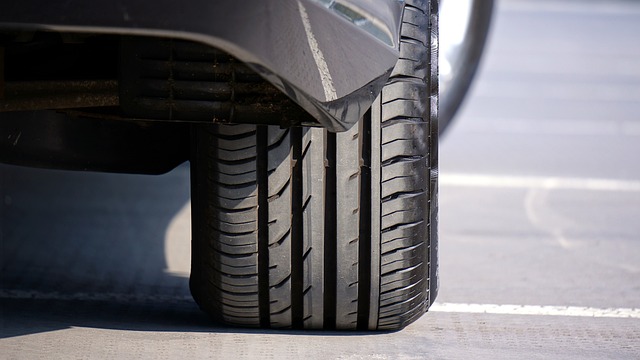
Despite the advances in tire technology, tread life is finite and will vary depending on car type, tire type, driving aggressiveness, and even road or weather conditions.
Car tires will need to be replaced several times throughout a vehicle’s lifetime. Nothing lasts forever, as the old saying goes. Responsible driving and proper maintenance can increase the tire’s mileage. Monthly tread inspections can detect the federally required tread wear indicators. This will allow you to determine when your tires need to be replaced.

Types Of Tires
It’s important to be aware of your current car tires and explore your options when it comes to replacing them.
Normally, you will need new tires that match the speed rating and tire size to fit your vehicle. You can then use the ratings to identify models that excel in handling, noise, braking, and ride comfort to find the right tires for you.
1. All-Season Car Tires
All-season tires are available in various sizes to fit all vehicles, including small cars and light-duty pickup trucks. This tire is designed for drivers who desire all-year traction, long treadwear, and a comfortable ride. However, all-season tires lack the grip and precision of performance tires.
2. Performance All-Season Car Tires
The all-season performance tire offers an all-year grip. In addition, they are faster than standard all-season tires and offer better handling and braking.
Performance all-season tires are marked with a snowflake mountain symbol at the sidewall. They have cold-weather traction comparable to dedicated winter/snow tires but can be used year-round. Furthermore, all-weather tires don’t need to be replaced seasonally.

- Ultra-High-Performance Tires
All-season and summer ultra-high-performance tires are usually fitted to sporty vehicles.
These tires provide excellent handling and responsive steering in wet and dry conditions. However, treadwear and ride comfort are often compromised. For example, summer ultra-high-performance tires won’t grip in cold conditions and aren’t recommended for use in snowy or icy weather. In addition, winter traction may be compromised by all-season tires.
4. All-Season Truck Tires
The all-season truck tire can handle heavy loads. These tires are versatile and can withstand all conditions.
5. All-Season SUV Tires
All-season SUV tires were specifically created for modern SUVs. They are a combination of truck and car tires. These tires are designed to provide the best performance, comfort, and light-duty lifting capabilities of these vehicles.
6. All-Terrain Truck Tires
All-terrain truck tires have been designed for heavy-duty use. They can be used on both paved and unpaved roads. This tire tread has a more rugged design to offer extra traction on snowy and unpaved roads.
7. Winter/Snow Tires
Snow tires have a superior grip in cold conditions. In addition, they have faster treadwear compared to all-season tires because the tread is specially designed to grip snow and ice. Furthermore, the rubber is formulated for freezing temperatures. However, on clear roads, a winter tire is more difficult to stop than other tires.
8. Performance Winter/Snow Tires
These performance winter tires are available in sizes that will fit both ultra-high performance all-season and summer tires. These are intended to replace ultra-high performance all-season and summer tires, offering better cold-weather grip.
9. Truck Winter/Snow Tires
Truck winter/snow tires were specifically made for SUVs and pickup trucks. Always use these tires in a set of four for optimum performance.

Tire Treadwear
Most new car tires have a treadwear grade. However, this grade is only a comparison tool and does not indicate how long a particular tire will last. In addition, manufacturers use different methods to make treadwear mileage claims, making it difficult to compare tire mileage between brands.
Keeping your tires properly inflated is the key to keeping them last longer. Poor inflation—which includes over-inflation or under-inflation—can cause tires to have uneven treadwear. Furthermore, misaligned tires can also cause uneven wear.
Tire Pressure Monitoring Systems
Since 2008, tire pressure monitoring systems have been standard equipment on all new cars. Government studies have shown that the system has led to a substantially reduced number of tires underinflated on the roads, which has benefited fuel economy and safety.
Federal law requires that the vehicle be capable of monitoring the pressure and alerting the driver if it drops. However, it doesn’t specify the technology. Many wheels have sensors that measure the pressure and transmit the data wirelessly to your car’s instrument panel. Unfortunately, direct tire pressure monitoring systems may need batteries to be replaced every few years. This can often lead to the replacement of the entire sensor.
While some systems only alert you to pressure loss by flashing a light, better systems can provide an actual reading of the tire pressure. For example, indirect systems use the antilock brake system to measure wheel speed and interpret pressure. However, these systems do not use pressure sensors, so they cannot display pressure.
Tire Maintenance

Safety checks are more important than ever because of the longer-lasting tires. Today’s tires can last up to 50,000 miles before they start to wear. However, heat, environmental factors, and underinflation can cause them to fail. Tire care is essential. It is always better to be safe than stranded on the side of the road.






